What Happened with Liz Truss: A Timeline of Her 6 Weeks as U.K. Prime Minister
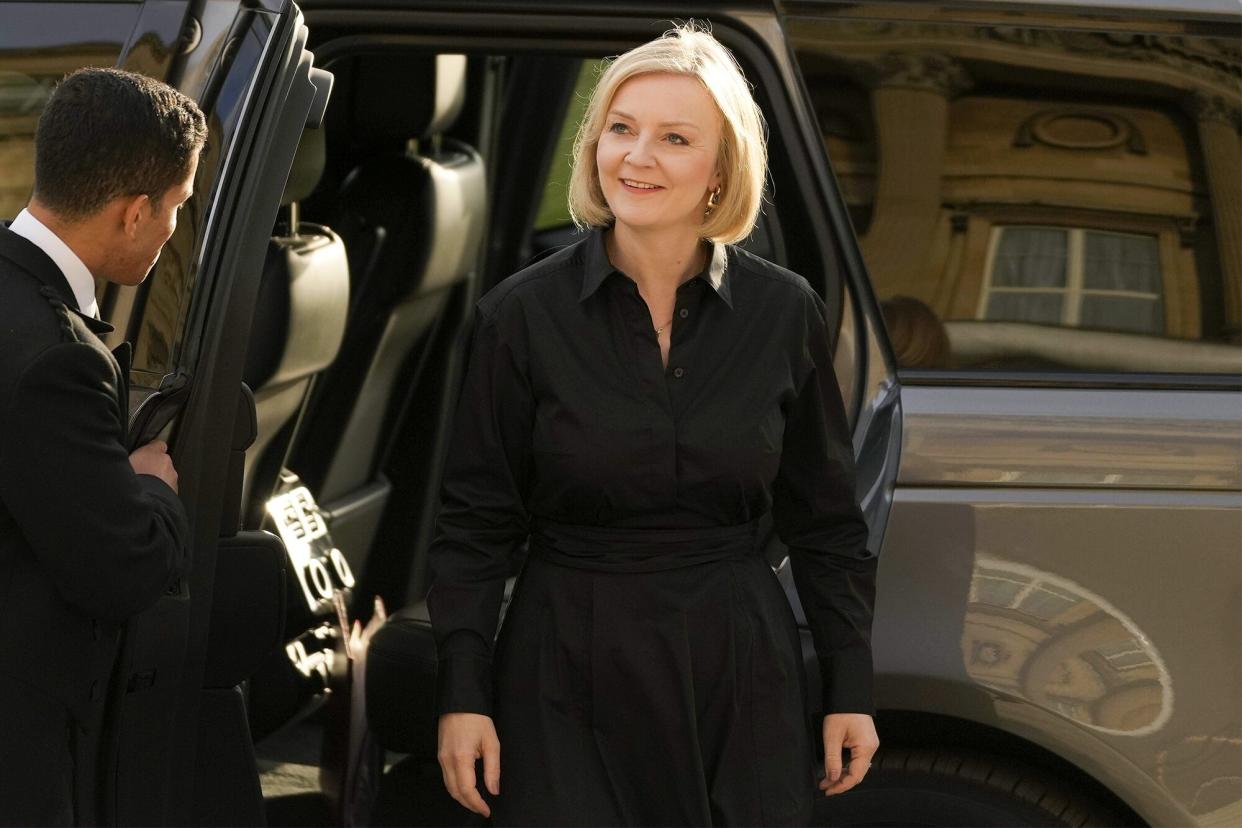
Markus Schreiber/AP/Shutterstock Britain's Prime Minister Liz Truss arrives at Buckingham Palace reception hosted by King Charles
British Prime Minister Liz Truss announced on Thursday that she would resign just 45 days into her premiership — news that came amid controversy brought on by a failed economic plan that launched the United Kingdom into financial turmoil.
Truss' resignation came on the heels of calls to do so from more than a dozen British legislators. So, how did she end up here, and in just a few weeks?
Below, a timeline of Prime Minister Truss' brief (and chaotic) moment in power.
RELATED: Brits Wanted to Know if Liz Truss Would Outlast a Head of Lettuce. She Didn't
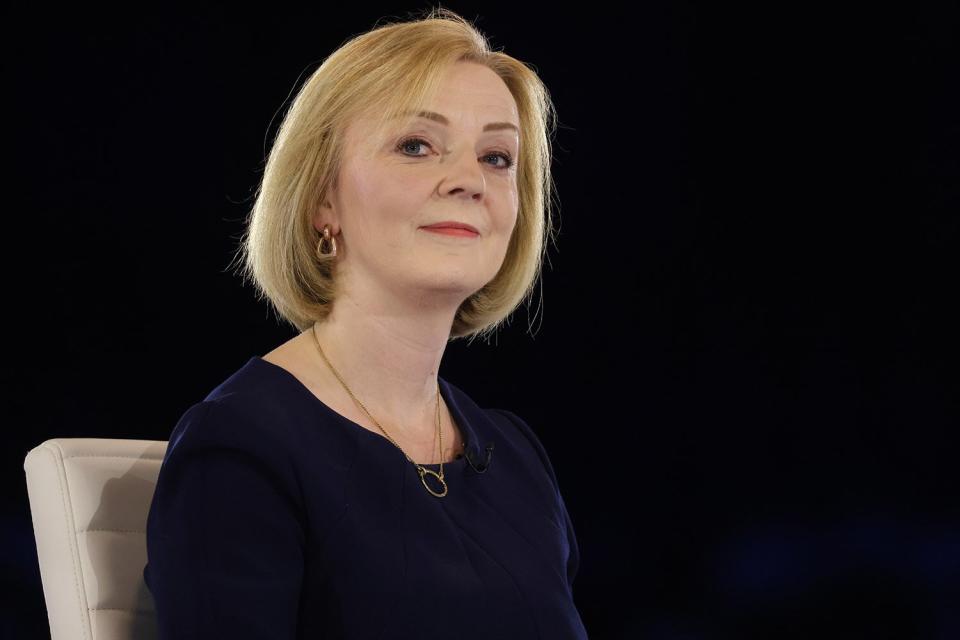
Hollie Adams/Bloomberg/getty Liz Truss
Sept. 5: Truss is selected as prime minister
Conservative Party members selected Truss — who had previously served as Britain's Secretary of State for Foreign, Commonwealth and Development Affairs and Minister for Women and Equalities since 2019 — as their new party leader in early September.
Truss replaced former Prime Minister Boris Johnson after he stepped down as the British premier amid scandals including COVID-19 "Partygate," in which 16 social gatherings were found to have taken place in Downing Street during a 20-month period of various levels of COVID-related lockdowns in England.
The margin of victory for Truss was slimmer than many expected, with the conservative winning 57% of the votes of her party's members to become its leader.
Truss' appointment made her the third woman to serve as prime minister, behind Margaret Thatcher (1979–1990) and Theresa May (2016–2019).
"Thanks for putting your faith in me to lead our Conservative Party, the greatest political party on earth," Truss told supporters at an announcement event that day.
RELATED: Queen Elizabeth Appoints New Prime Minister Liz Truss in Scotland – a Royal First
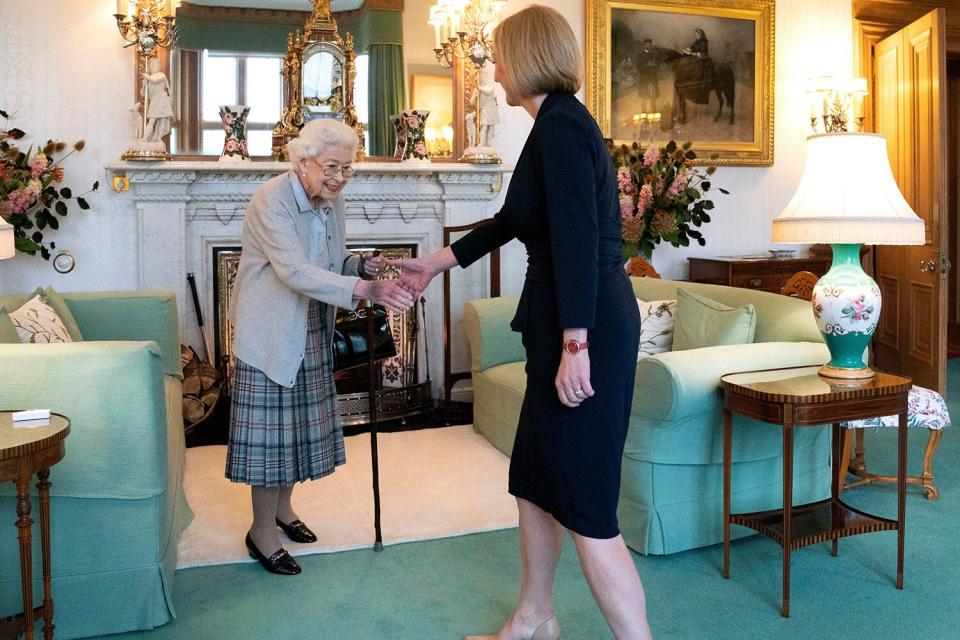
Jane Barlow/AP/Shutterstock Queen Elizabeth and Liz Truss
Sept. 6: Truss is formally appointed prime minister by Queen Elizabeth
For the first time in her 70-year reign, Queen Elizabeth II appointed a new prime minister in Scotland, at Balmoral Castle, where the monarch traditionally spent her summers.
Outgoing Prime Minister Johnson also traveled to Scotland Tuesday for a formal farewell from the monarch.
While a source had explained earlier that the decision was made for the audiences to take place at Balmoral to provide certainty for the new prime minister and Johnson's schedules, it became clear later that holding the event in Scotland likely had something to do with the Queen's health. Her meeting with Truss was the last time she was publicly photographed.
RELATED: Queen Elizabeth and the Prime Ministers of Her 70-Year Reign — from Winston Churchill to Liz Truss
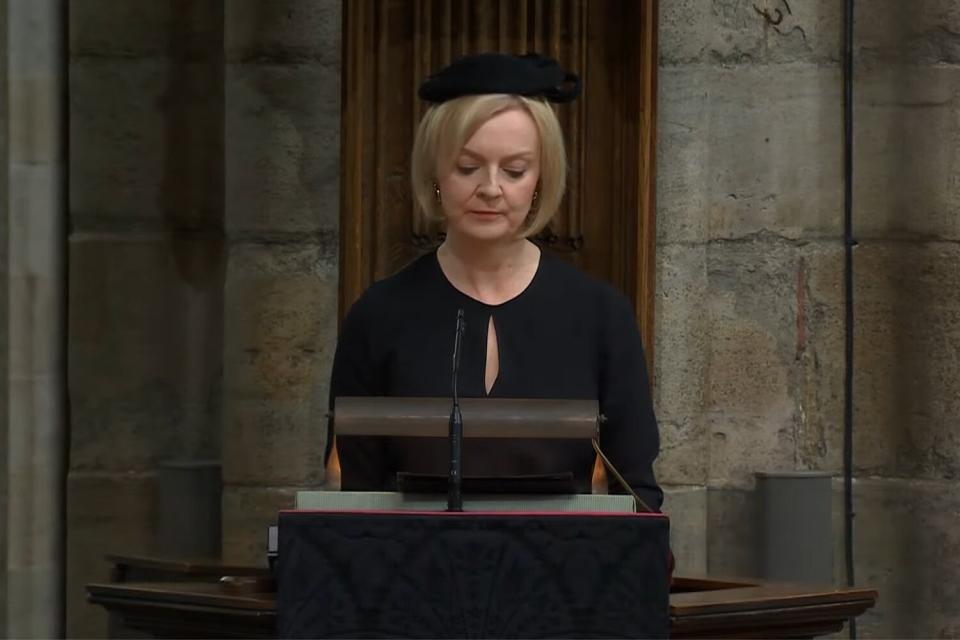
BBC America Prime Minister Liz Truss at Queen Elizabeth II's funeral
Sept. 8: Truss is thrust into the international spotlight with the Queen's death
Just two days after formally appointing Truss prime minister, Queen Elizabeth died at the age of 96. Truss, now squarely in the spotlight, paid tribute to the late royal while helping usher in a new era with King Charles III's pending succession.
"We are all devastated by the news we have just heard from Balmoral. The death of Her Majesty the Queen is a huge shock to the nation and to the world," Truss said in a statement. "Queen Elizabeth II was the rock on which modern Britain was built. Our country has grown and flourished under her reign. Britain is the great country it is today because of her."
Truss continued: "Her life of service stretched beyond most of our living memories. In return, she was loved and admired by the people in the United Kingdom and all around the world. She has been a personal inspiration to me and to many Britons. Her devotion to duty is an example to us all."
RELATED: U.K.'s New Prime Minister Liz Truss Remembers Queen Elizabeth as the 'Very Spirit of Great Britain'
Sept. 23: Truss' chancellor announces historic tax cuts
Nearing the end of September, Truss' chancellor, Kwasi Kwarteng, announced what would have been the biggest tax cuts in the U.K. in 50 years. Truss dubbed the tax plan a "fiscal event," and not a budget, and therefore did not consult the Office for Budget Responsibility.
When it emerged that Truss had not told the Bank of England about the tax plans, chaos in the financial markets ensued and the British pound sank as the International Monetary Fund called for a reversal of the plan.
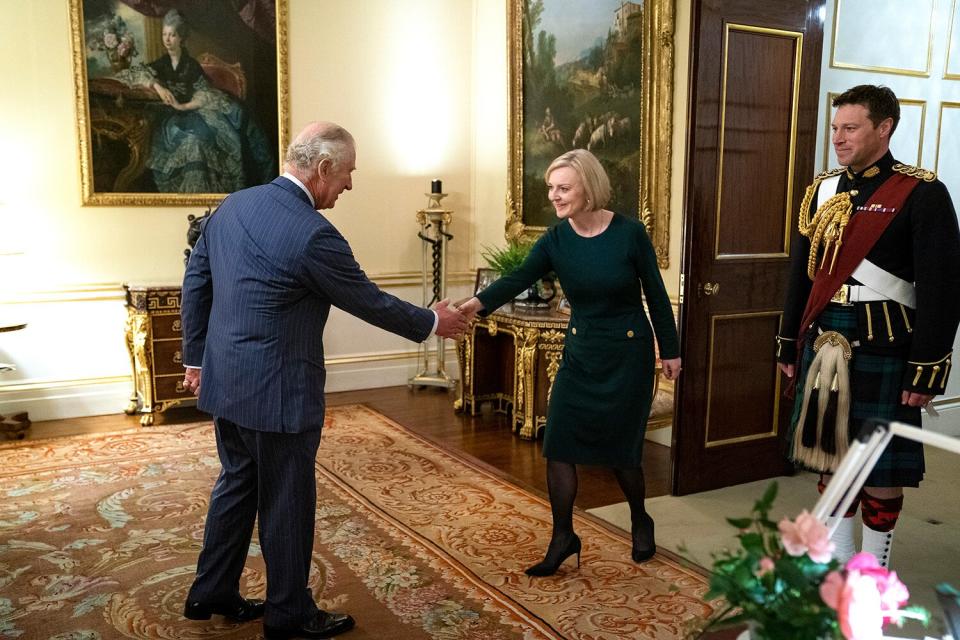
Kirsty O'Connor - WPA Pool/Getty
Oct. 13: Truss has her first audience with King Charles III
Truss' relationship with King Charles III began with an awkward start, as seen in a video shared on Twitter by ITV's Lizzie Robinson.
Escorted to the meeting room, the prime minister curtsied before shaking hands with the monarch, addressing him as "Your Majesty."
"Back again," Charles noted, to which the Conservative Party leader replied: "Well, it's a great pleasure."
"Dear, oh dear," the King said, looking down. "Anyway," he continued, pivoting the conversation.
Like Queen Elizabeth and other monarchs before her, King Charles is to hold private audiences with the prime minister each week to discuss government matters.
RELATED: King Charles Tells Prime Minister Liz Truss That Queen's Death Is 'Moment I've Been Dreading'
Oct. 14: Truss fires Kwarteng
After weeks of saying she would not abandon the plan, Truss reversed course, announcing in mid-October that she would abandon part of the plan and fire Kwarteng. After the partial reversal of Truss' tax policy seemingly didn't go far enough, more of the plan would be abandoned in the ensuing days.
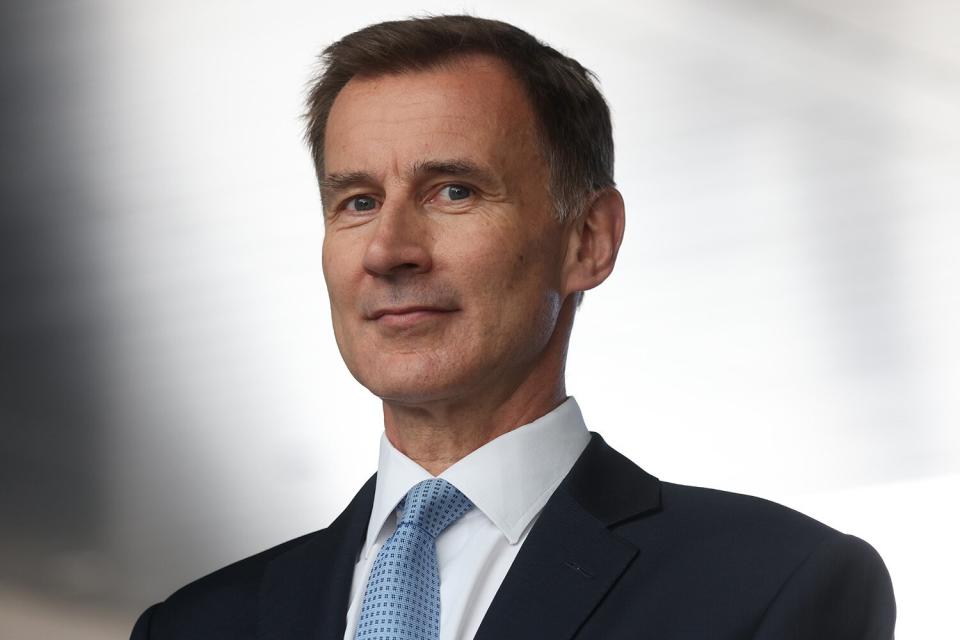
Hollie Adams/Getty Images Jeremy Hunt
Oct. 17: New Chancellor Jeremy Hunt reverses the tax plan
New Chancellor Jeremy Hunt, who replaced Kwarteng, announced on Oct. 17 that the previously announced tax cuts would not move forward as planned.
Hunt's announcement was deemed "one of the most astonishing U-turns in modern political history," The Guardian wrote, and included "slashing the energy price freeze which the prime minister had repeatedly championed" and dismantling "almost all of the platform that Truss's leadership victory had been built on, including the majority of her tax cuts."
Media outlets across the U.K. quickly reported Truss had lost control of her government, with The Economist estimating that Truss saw just "seven days in control" — which equated to, as the magazine put it, "roughly the shelf-life of a lettuce."
Truss, however, remained defiant, saying on Oct. 19 she was a "fighter not a quitter."
Never miss a story — sign up for PEOPLE's free daily newsletter to stay up-to-date on the best of what PEOPLE has to offer, from juicy celebrity news to compelling human interest stories.
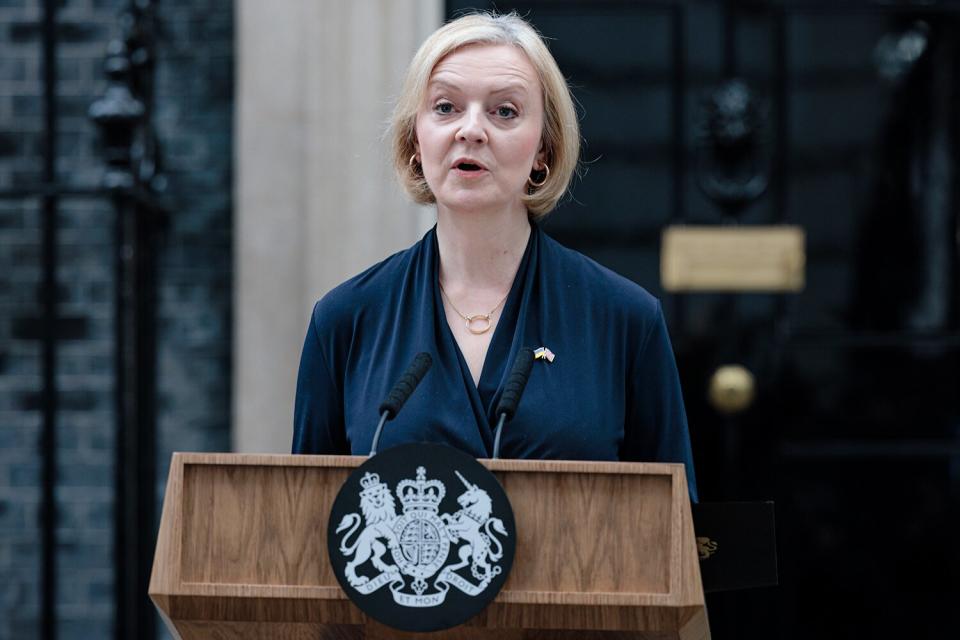
Rob Pinney/Getty
Oct. 20: Truss resigns
Outside No.10 Downing on Thursday, Truss informed her constituents that she had notified King Charles III of her intent to step down, and would continue her duties for a few more days until a new Conservative Party leader is chosen.
"I came into office at a time of great economic and international instability. Families and businesses were worried about how to pay their bills. Putin's illegal war in Ukraine threatens the security of our whole continent and our country is being held back for too long by low economic growth," Truss said in her resignation speech.
A leadership election to find her successor will be completed within the next week, Truss said, to "ensure that we remain on a path to deliver our fiscal plans and maintain our country's economic stability and national security."

 Yahoo News
Yahoo News 
